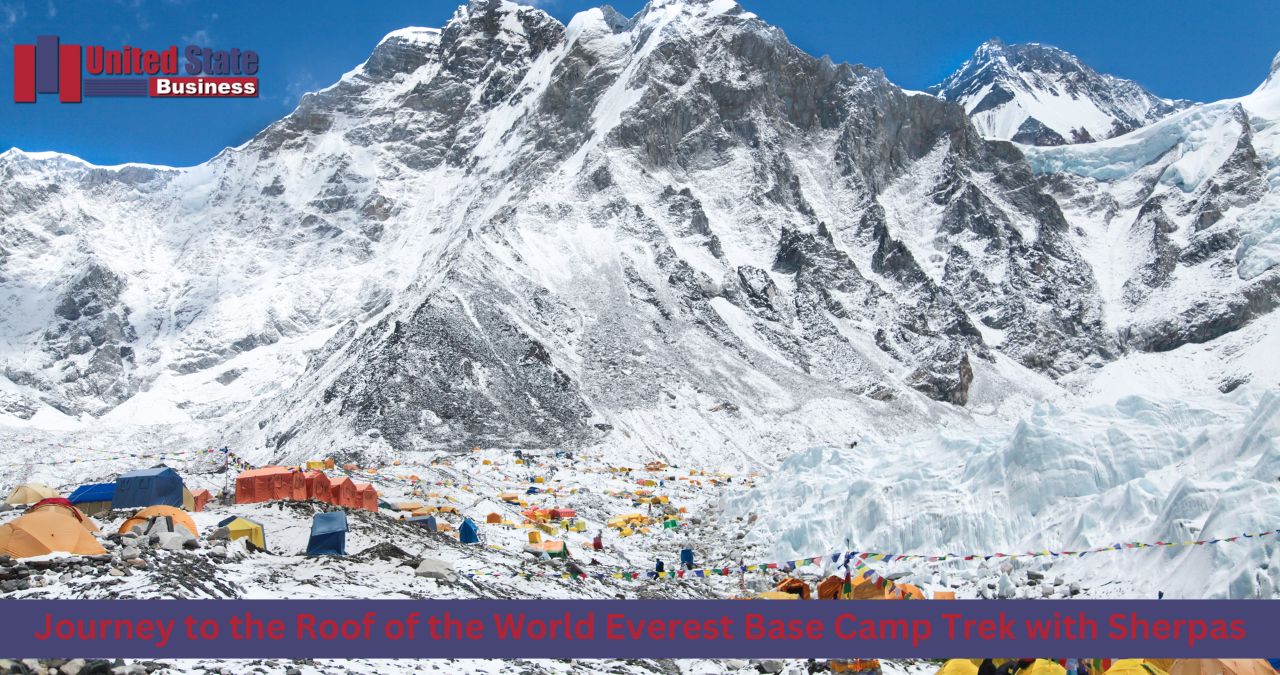The Sherpas are the heart of any Everest Base Camp trek. Based in the Khumbu region, these are true mountaineers and have an intimate knowledge of the terrain and climate conditions of the Himalayas. This combination of knowledge is precisely what makes them invaluable partners, keeping trekkers not just safe but able to fully understand the deep beauty and meaning of the trek. Sherpas are essential for guiding climbers through the wild landscapes of Nepal, negotiating steep slopes, rocky trails and isolated hamlets while imparting their vast understanding of the mountains and the local way of life.
Reaching Everest Base Camp: An Introduction
Many adventurers dream of reaching Everest Base Camp to feel the presence of the tallest mountain on Earth, Mount Everest. The journey to this famous site is a boisterous trek through the harsh landscapes of the Khumbu region of Nepal. As they go, trekkers soak up the stunning beauty of the Himalayas, with views of sprawling peaks, glaciers, and valleys. But the path to Everest Base Camp is no ordinary trek; it’s a spiritual journey, a cultural odyssey through a region that has fascinated adventurers for hundreds of years. This journey often leads trekkers through remote Sherpa villages, ancient Buddhist monasteries, and provides another opportunity to observe firsthand the tenacity of the people who claim these mountains as their own. Your life will be changed forever — this trek is a once in a lifetime experience of natural beauty, physical challenge, and cultural richness.
Trek Preparation: Both Physical and Mental.
Getting ready for the Everest Base Camp trek Cost requires mental and physical preparation. Physically, trekkers should be in good form, although what you mostly need is cardiovascular fitness and stamina for the long, sweaty days of hiking at high altitudes. Every training program should incorporate cardiovascular exercise, strength training and stamina-building activities. Arguably just as critical is mental preparation, since the hike is emotionally and psychologically taxing. Trekkers need to consider the brutal weather, rough terrain, and being isolated in the mountains. A positive mindset, mental resilience, and stamina when fatigued or uncomfortable are more important than anything else toward completing the trek.
Cultural Interactions During the Trek
The trek to Everest Base Camp, however, is as much a cultural adventure as a physical one. The route winds through remote Sherpa villages, where trekkers can experience the traditional lifestyles, customs, and religion of the people within the Himalayas. Sherpas offer unmatched wisdom about the history, culture, and sacred nature of the area. They pass ancient Buddhist monasteries, including the Tengboche Monastery, a remarkable religious site that stands the test of time, as they explore the “Gateway to Everest” while observing how nature informs the region’s spiritual life. The journey also offers the chance to meet the local Sherpa community, learning about their deep connection to the mountains and their identity as protectors of the Everest region. And it is this cultural exchange that for me adds an extra layer of meaning to the trek, deepening the experience, and creating connection to the land and its people.
Everest Trek Daily Life and Routine
Trekkers on the Everest Base Camp trek typically have a quotidian way of life that works for them to keep them focused, energized and healthy. Mornings start with a substantial breakfast, typically porridge, eggs and tea, to fuel the day’s hike. This hike is around 5-7 hours worth of walking, with regular pauses to rest and hydrate. Sherpas help set a pace that’s manageable, giving trekkers time to acclimatize to the altitude and recuperate as needed. As trekkers walk through a variety of stunning villages, they can enjoy tea or lunch in local teahouses. Trekkers converge at teahouses in the evenings for a meal, and to process the day’s hike. Sherpas see to it that trekkers are well-catered and guidance is given on dealing with altitude sickness and exhaustion. It also features critical resting days to aid in acclimatisation, ensuring climbers have the time to adjust to the increase in elevation before tackling the hiking route up to Everest Base Camp. Trekkers have enough energy and mental clarity to finish the trek due to the day’s structure and constant Sherpa support.
Required items for the trip
Planning for the Everest Base camp trek involves a lot more than just the trekking itself, especially when it comes to the right gear to pack. Must-have items are solid hiking boots, a warm sleeping bag and a backpack for water and snacks. Dressing in layers is important, as temperatures can vary widely. To protect from cold and wetness, a down jacket, and waterproof outer layers are required. Trekking poles can assist with balance and ease on steep inclines. Sunglasses, sunscreen and a hat are also must-haves for UV protection at these high elevations. Health — a first aid kit, personal medicines, and a water purification solution. Your Sherpa will offer recommendations about what to pack, and there are also options to rent equipment in Kathmandu or Lukla. The right equipment guarantees comfort, safety, and a more pleasant hike.
Sherpas — Knowledge of the Himalayas and Local Culture
Sherpas have an unparalleled knowledge of the Himalayan region and everyone who lives there, making them invaluable Everest Base Camp trek guides. These individuals have been on the trial for years, and as such are familiar with the terrain, the weather, and the creatures that may inhabit that area, which in turn gives them the ability to predict challenges and make recommendations for hikes.
Lessons learned: The Trek that changed everything
All of that is to say that, while crossing each of the seven peaks does produce great satisfaction, completing the Everest Base Camp trek itself is a truly unforgettable experience. It is not just a physical endeavor but also a profoundly spiritual and emotional journey. Reaching Everest Base Camp, at the foot of the world’s highest mountain, is an indescribable moment of triumph. The trekking is filled with various challenge that you would never face in your modern city life, and overcoming them will surely give you a great sense of accomplishment. All of it adds up to a life-changing journey, from the cultural insights gained along the way to the physical achievements and moments shared with your fellow trekkers and your Sherpa guide. Ultimately, this trek is a journey of self-discovery for many, challenging themselves to face their fears, embrace resilience and make lifelong memories in one of the most stunning and high-altitude areas on earth.
Final Words: Climbing to the Top of the World with a Sherpa
The trek to Everest Base Camp is a trip of a lifetime, and having an experienced Sherpa take you up just makes it that much more special. Along with expert guidance and safety, Sherpas enrich the trek with cultural insights and emotional support. Essentially the lifeblood of the trek, these people keep trekkers healthy, motivated and informed on their quest to reach one of the world’s most iconic destinations. With their understanding of the terrain, their profound relationship with the mountains and their unshakable help, Sherpas make traversing the Roof of the World a metamorphic adventure. Few adventures can offer the same sense of personal growth and accomplishment as completing the Everest Base Camp trek with a Sherpa.



